4 Tips for Converting Law Firm Intake Calls Into Clients
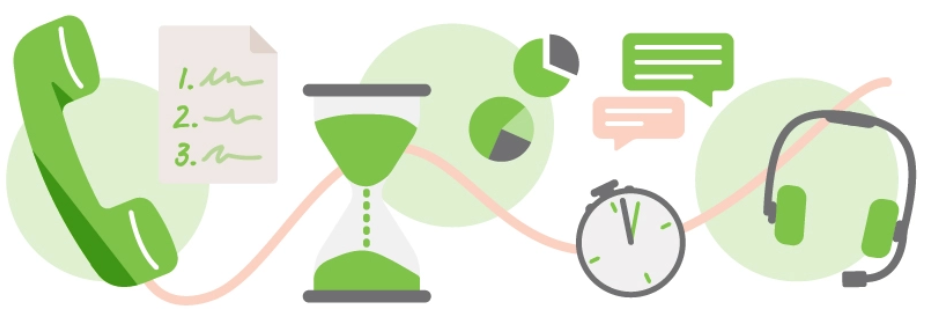
What is a legal intake call?
A legal intake call is the initial contact between a potential client and a law firm, typically made via phone but can also include emails or website inquiries. This call marks the beginning of the client intake process, where important information about the client’s legal needs, case details, and contact information is gathered. The goal of a legal intake call is to assess the potential client’s case, determine if it aligns with the firm’s expertise, and ultimately convert the prospect into a client.
Intakes are the life blood of a law firm. If you think of marketing as the roots of the firm, intakes are nutrients they carry. When we work with firms, we get a good picture of how their system is operating. One thing we see more often than we’d like to admit is that many firms think they’re killing it on intakes, when in fact intakes are killing the firm.
The nutrients are flowing, but they’re not being converted. They’re being wasted. Is that happening at your firm? How would you know? And how can you make sure you’re getting the most out of your intakes? Here are some tips for improving your intakes from people who work intakes for a living.
Tip #1: (Really) Measure Your Intake Conversion
Be honest: What percentage of your intake calls do you convert? Some larger firms with intake departments and software may be able to answer this question – not all can. If you can’t, that’s a bit of a problem. The first step to fixing a problem is knowing you have one, and identifying its source.
 Intake Call Meaning: What Is an Intake Call?
Intake Call Meaning: What Is an Intake Call?
An intake can come to your firm via different routes – an email, a phone call, your website’s contact form – but the majority of intakes arrive via the telephone. The intake call, when a potential client calls your firm, starts the client intake process, and as such, must be handled carefully. Whether the caller needs immediate legal help or is researching for future needs, the info relayed in this initial call and how it is relayed, is crucial.
 Who Is Taking Your Intake Calls?
Who Is Taking Your Intake Calls?
Let’s start at the beginning – when someone contacts your firm. Who takes that call? Is it a dedicated intake specialist? A paralegal? An attorney? Your voicemail system? This is your first impression. Larger firms may have intake departments with people manning the phones and dedicated intake attorneys. That doesn’t necessarily mean they’re efficient or converting, and let’s face it, that’s the exception, not the rule.
By contrast, smaller firms may treat intakes as a team responsibility. The receptionist taking your intake calls may simply be a fact of life for your firm. Maybe it’s an additional responsibility of a paralegal. No matter who it is, the key point here is to measure your ability to convert these prospects into clients.
How Many Intake Calls Do You Get Versus How Many Clients Do You Sign?
In other words, what’s your hit rate? To measure that, you need to know how many prospects are calling versus how many actually sign. So, how are you measuring it?
If you treat intakes as a team responsibility, everyone who takes a call has to be able to record that in a file or a system somewhere. It would also be helpful to know how many calls each person converted out of the total calls they received. If you’re not keeping a record, it’s possible that your intakes are nowhere near as good as you may think.
If you have one person who fields intake calls, it’s easier to track both numbers and conversions – but is this person dedicated to intakes? Trained to convert prospects to clients? Whether it is a receptionist, a paralegal, or an attorney, this person is the tip of your spear. You need to know they’re sharp (and not juggling too many jobs to do any of them well). Measuring tells you that, so this person needs to keep detailed records.
If you have an intake department, what are you measuring? The answer should probably be everything, or at least as much as you can. Who are your best intake people? What makes them great? Who’s closing the deal and signing clients? The more factors you can measure, the more you can optimize your intake systems. Just because you have an intake team or department doesn’t mean you’re converting well – or that you couldn’t convert better.
Do the People Handling Your Intakes Have Good Tools?
Whether it’s a simple, tried-and-true call script, a dedicated intake platform, or a fully integrated case management software solution like GrowPath, the better the tools, the better the intakes can be.
Above all, tools help you systematize if they don’t outright systematize for you. The more consistent you are in how you treat intakes, the more you can hone that skill and improve the results. What tools are you supplying those who handle your intakes?
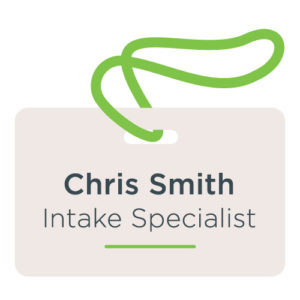 Best Practices: An Intake Specialist
Best Practices: An Intake Specialist
While some firms already have specialists working for them, the term “intake specialist” can refer to someone at your firm who is specifically trained to take intake calls. This is a more consistent method, and allows for fine tuning the skill set, and generally being comfortable asking questions. Finally, whether you have a team or a single person responsible for intake calls, having dedicated personnel means you’ll always know who is taking the call. Gathering data in part of the job, so measuring should be easier.
Tip #2: (Response) Time Is of the Essence
The biggest, easiest mistakes any firm of any size can make regarding an intake involve speed. The people calling your firm probably need legal help now – not necessarily from you specifically. They don’t need “a” lawyer, they need “any” lawyer. When someone calls your firm, they’re likely in need. Here are some common breakdowns we see that lead to prospects evaporating.
Mistake: Not Having a Lead Intake Specialist if You Can
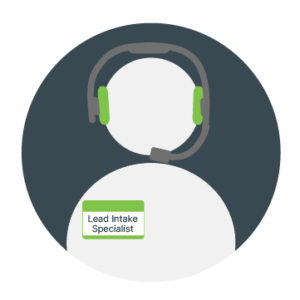 Having a lead intake specialist helps your firm respond to intakes in a timely manner and ensures that you are obtaining the info you need to determine whether or not a caller is the right type of client for you. Intake specialists can sign clients on the spot or put them in touch with an attorney ASAP. They can help your firm convert prospects into clients.
Having a lead intake specialist helps your firm respond to intakes in a timely manner and ensures that you are obtaining the info you need to determine whether or not a caller is the right type of client for you. Intake specialists can sign clients on the spot or put them in touch with an attorney ASAP. They can help your firm convert prospects into clients.
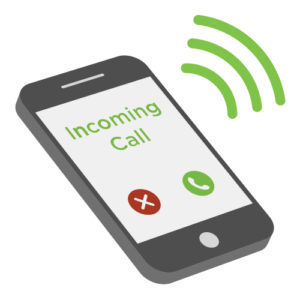 Mistake: Missing Calls During Business Hours
Mistake: Missing Calls During Business Hours
This is more a problem for smaller firms that don’t have dedicated intake specialists or departments, but it can affect larger firms as well. Your firm’s business hours are easy to find online. People expect someone to answer the phone. If you don’t, it sets a precedent that you’re not going to answer the phone when they become a client.
Basically, the tip here is that if your phone is ringing, someone should answer it.
 Mistake: Not Returning Calls (or Texts)
Mistake: Not Returning Calls (or Texts)
Not every inquiry comes in during business hours. If your firm markets itself, you could get inquiries at any time. For example, if you’re in a state that allows you to send direct mail, people may not get home and get the mail before you close for the day. Or, if you use television ads, they may not see your ad until night time. Plus, car accidents and injuries happen on weekends, too.
These people likely do not expect your firm to be open or answer a call or text at such a time (unless you promote that you will). If they leave you a message, return it as soon as possible. This is priority one the next business morning. The right time to follow up on a call is “always.”
If possible, you might consider investing in an intake service. This will ensure you capture intakes for the times no one is available or in the office. You can even have the most important intake calls routed to someone immediately.
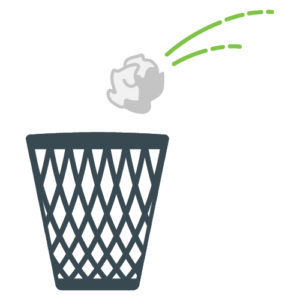 Mistake: Not Persevering
Mistake: Not Persevering
Okay, so you call the prospect back. They don’t answer. You leave a message. They don’t call back. End of story? You may not like it, but you need to keep calling (or texting if you’re able to do so) until you get that prospect on the line.
Your goal is to have a conversation, not play phone tag and not just leave a message. Conversations, not voicemails, lead to clients. If they do not answer your morning follow-up, call again later in the morning. Keep calling until they answer. Either they’ll tell you to go away, or they’ll tell you what they need. Either way, it’s a win. Because you talked to them.
 Best Practice: Follow-Up By Design
Best Practice: Follow-Up By Design
You can’t always get to every call. And potential clients can always make decisions on the spot. That means you’re going to have to follow up. One of our most successful clients uses a very specific system, but generally, their method is as follows.
Call back three times a day – morning, afternoon, and evening. Leave a voicemail on the first attempt if the prospect can’t be reached, but only on that first call. Similarly, one text per day. Finally, if the number rings as busy or seems like it is disconnected, follow up via email. Do this for four days, and then cease contact.
What works is something that your firm must explore for itself. Different practice areas may need a different approach. Your location may even influence your follow-up method. Experiment, test, and learn.
Bonus Tip: Get the Intake on the Phone With an Attorney as Soon as Possible
If attorneys aren’t answering intake calls – and most of the time they aren’t – get the prospect on the phone with one as soon as possible. Nothing says you’re serious about someone’s case like putting them on the phone with an attorney.
If you can sign the client without doing so, great! Do it! Many clients, however, will appreciate the opportunity to speak with an actual attorney before they make a decision. Some may even expect it. Remember: speed matters. Schedule the appointment before you get off the call, if possible. If not, perhaps the attorney can set aside time each afternoon to review call notes and call back prospective clients.
Tip #3: Ask (the Right) Questions, and Remember the Answers
Once a prospect is on the phone, you’re into the part of the intake process you have the most control over. It’s your opportunity to make a good first impression and to make your case to represent this person. It’s also a place where you can make a lot of mistakes and let a lot of value slip away.
Here are some best practices to prepare for the critical time when you’ve got a potential client on the line:

Start with a script. If you don’t already have an intake call script, develop one. If you have one, try to improve it, especially if you notice that you’re losing the prospect around the same point in the call. Larger firms with dedicated intake specialists certainly have scripts, and train those specialists to use them well. Smaller firms with lawyers taking intake calls would do well to create a lawyer intake script if none exists.
![]()
Actively listen. Prospects will tell you about their situation, circumstance, or problem. Sometimes, they answer questions you’ve not even asked yet.

Get the information you need. This goes beyond what you need to evaluate a case. Take the opportunity to find out how the prospect heard about you. How old are they? These things are important not just for identification, but for marketing.

Ask good questions. Most successful scripts have a set of questions that need to be answered in order to identify if the prospect is a potential client and evaluate the case. More advanced intake and case management solutions may add sophistication with “smart scripts” that prompt follow-up questions depending on the answers the prospect gives.

Take notes. Listening doesn’t help if you’re not recording what you learn. Whether you do it on a note pad or in a case management system, record the facts. If you’re not creating a record, you’re just going to have to do it later – by asking them to repeat themselves, or by asking the same questions over again.

Confirm answers, don’t repeat questions. Few things are as annoying as answering the same question twice. If you are following up with a possible client who has already answered the intake questions, you should have their answers in front of you. “I have here that you’re 64 and you’re experiencing lower back pain, is that correct?” is very different than, “Can you tell me about your injury?”

Ask to represent them. If you want their case, say so. While many people prefer to do business face-to-face, another quick tip is to have electronic signature capability if you don’t already. Put as few obstacles between your firm and a signed client as you can.

Determine next steps. Is this case one that has a lot of potential value? If they’re not signing, you need to get in touch again – schedule it. Do whatever you need to do to ensure you have the best chance to sign the case.
So What Are the Right Questions?
The value in asking the right questions is that you’re identifying and signing cases with the most value. Any question that delivers data you don’t already have is valuable, and most scripts cover the need-to-know information.
The two data points most firms must have first are date and location. You need the date to ensure the statute of limitations isn’t an issue, and the location to ensure you’re able and comfortable working that area (if you practice near a state border, for example).
The ultimate goal is to evaluate what kind of case this person may have and value it accurately – and even find cases they may not know they have.
For a completely fictitious example, let’s say you’re a PI firm and have an intake for a car accident victim who has contacted your firm. You find out the following information with your script and simply because the person is sharing information:
- Male
- Married
- 55 years old
- Accident was two days ago, and happened locally
- Lives in the same city as your office
- Was a passenger in a new car that was hit by another driver
- Broken right leg treated in ER
- Suffering pain along the right side of the body, including the right hip which is a replacement
- Taking two prescription medications
- Had back surgery at age 32 due to an injury in military service
That seems like a lot of information, but there’s a lot more you could learn. Those with experience in intakes for PI firms are probably already scribbling down a bunch of questions. Some scripts may already provide for them. We’ll follow through with the example to make the point.
Here are just a few basic follow-up questions a savvy intake representative (or smart script) might ask to grow the file and add value for the client and the firm:
“How did you hear about us?”If he heard about the firm based on a marketing effort, that effort is obviously bearing fruit. This is the kind of information that enables to firm to spend its marketing budget more effectively.
“Were there any other passengers in the vehicle? What’s your relationship with them?”This shows concern for the other passengers, but is also a way to identify another possible client. Maybe he is married or was with a friend. Maybe his wife was in the car as well. In the worst case scenario, his spouse passed away in the crash and this man needs your firm’s help with a wrongful death claim.
“What kind of car were you in?”What if the vehicle is subject to a safety recall that could have impacted the severity of the man’s injuries? Perhaps the side airbags that could have protected his leg failed to deploy.
“Do you know about the other driver? Were they cited? Did you see anything?”If the man saw the other driver being road tested for sobriety, for example, the case’s potential value increases immediately.
“Did the treating physician notice anything else? What did they prescribe as treatment?”Some people forget everything that they were told in the ER or by a physician treating them. More injuries could mean more compensation for them. And prescribed treatment, from medications to follow-up, are important to establish continuity of treatment.
“When was your hip replaced? Do you know what kind of device you have?”A lot of hip implants have been recalled, and this presents the opportunity for a client to receive compensation from a mass tort. Even if your firm does not handle those cases, it can receive a fee by referring the case out.
“What medications are you taking?”It never ceases to amaze us how many prescription drugs are recalled. Depending on the drug, this could also be a mass tort opportunity – and more value for the client down the road.
“What kind of back surgery did you have?”The man may not be complaining of back pain now, but an insurance company looking to reduce their compensation will be looking for pre-existing conditions. It may not be important now, but it’s something the attorney on the case will want to know.
Does your script include provisions for follow-up questions like some of these? This list is by no means exhaustive. If all of them sound obvious to you, are they also obvious to the person or people handling your intakes?
The takeaway here is simple. There may be a lot more than a car accident injury on the line. Not every prospect is going to be some bonanza of mass torts, but you’ll never create any of that value unless you ask. And even if you don’t handle mass torts, there may be a fee found in the referral.
Therefore, the right questions are the ones that create value for the client and your firm. Do you think a client is going to be mad that you’re able to help them seek compensation they didn’t even know might be available? Something this simple can seal the deal.
Bonus Tip: Smarter Systems, Better Intakes
There are a lot of intake tools available to law firms, these days. They exist because, generally speaking, they improve conversion versus not having them. These systems can run the gamut from basic call software to full blown, integrated intake tools and smart scripts like we have in GrowPath. Regardless of what system you choose, take the time to learn it. Explore its features and implement as many as you can. Train anyone who might take intake calls to use that system to its fullest to take advantage of all its features to get maximum value out of it.
You can evaluate these systems in any number of ways, and choose the one that’s right for your firm. Consider: if you’re not using something to assist you with intakes, your competitors very likely are.
 Best Practice: Develop and Hone Your Intake Script
Best Practice: Develop and Hone Your Intake Script
You don’t want to overwhelm a prospect, and you don’t want to ask a bunch of unnecessary questions, but you also need to make sure it is a case you want. If you’re one of the firms not working from a script, creating one could make a huge difference. If you already work from a script, ask yourself how you can make it better.
Tip #4: Keep Working (After the Call)
A prospect isn’t a client until they sign up. That’s the ultimate goal of intake: turn prospects into clients. It’s usually not as simple as call – send – sign. No matter what the reason, you can’t let prospects linger. They want to feel like they’re making progress, and they don’t always sign during the first call.
Prospect Status: Who Should Call and What to Do Next
Always know the status of a prospect. Where are they in your process? How you track this depends on the tools and people available. If you depend solely on your receptionist, paralegals, and/or attorneys to continue to follow up, how can you introduce accountability? How can you measure who is calling, when, for how long, and for what purpose? Can you track your own progress? If not, how can you ensure the potential client feels like they’re making any?
Firms that use even basic intake software of some kind usually have the advantage of a reminder, calendar invite, task, or other hint that they need to be making a call. That’s all it is, though – a blinking light or a calendar note. The problem here may be the same as it is for the teams without software. It requires self-policing.
With more advanced and powerful intake tools, reminders and prompts to act are generated automatically when they’re really needed, the tasks are assigned to a person, and the status is visible to the team or supervisor. You know who should be calling who and when. This doesn’t guarantee a good intake, but it does allow you to plainly see point of failure.
Best Practice: Set Expectations, Make Progress
Every time you talk to a prospect, you should be setting expectations. The client should know what they need to bring to the table, if anything, and what will be accomplished by the call.
When you set an appointment to call, keep it. Call on time. If you don’t get an answer, call back immediately. Some prospects are unpredictable – that’s the nature of things. But you should be predictable.
Use a follow-up process. Make sure that every follow-up call you make accomplishes something. Again, people want to feel like they are making progress. Progress is the path to resolution, which is their ultimate rational and emotional goal. The more you fulfill on that need, the more likely they’ll want to retain you.
What Are Your Intakes Missing?
Those are just the basics. Some of this may not be news to some of you, but it may be a fresh perspective for others. Maybe you have a call script you’ve been using for years and now think, perhaps, it’s time to update it. Maybe you have ideas now on how your staff can work more efficiently and intelligently to shore up some deficiencies. Or, just maybe, you can see that your intake methods are costing you clients.
Regardless of where you fall on that spectrum, take a breath. Intake problems can be solved! You just need a little knowhow, the right tools, and the will to improve. And remember: the most important intake is always the next one.
